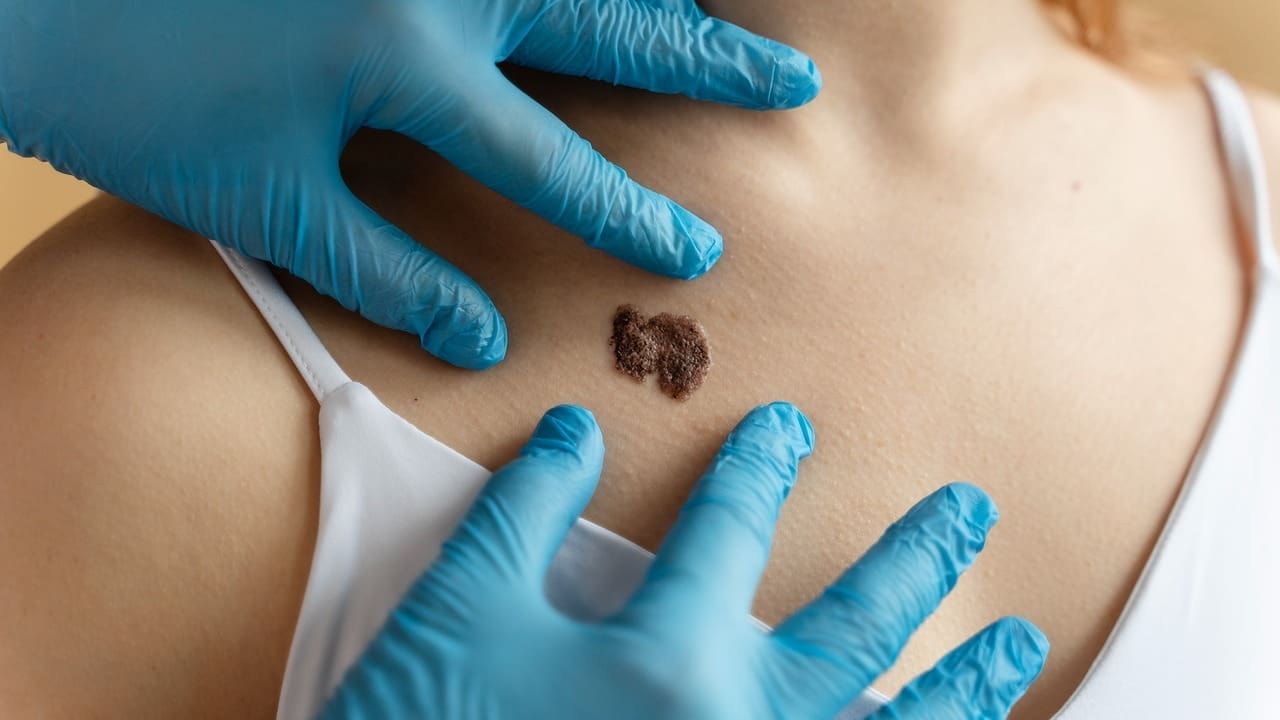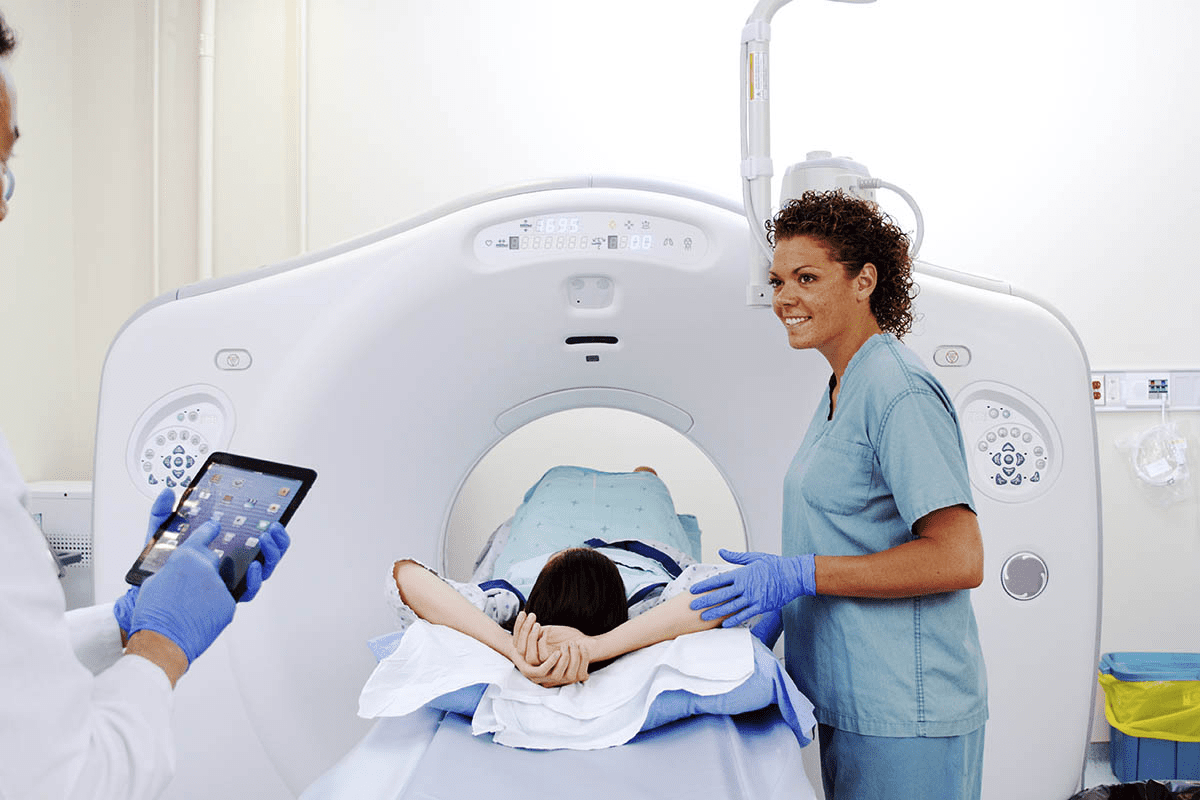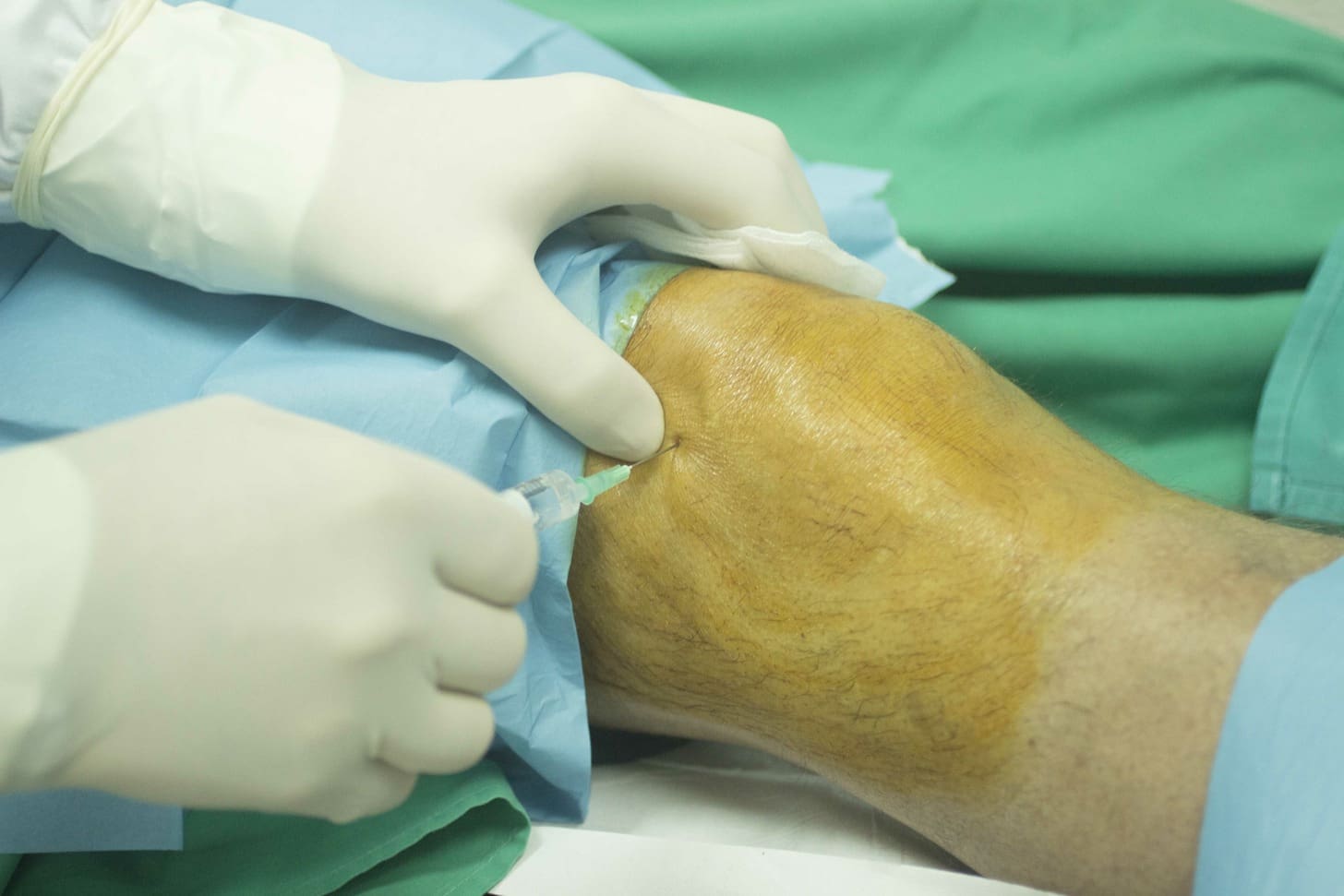Last Updated on November 27, 2025 by Bilal Hasdemir

Skin cancer is a big health problem worldwide. Every year, over 1.2 million people get non-melanoma skin cancer. More than 330,000 get melanoma.
We know how important it is to learn about skin cancer facts and statistics. At Liv Hospital, we offer top-notch healthcare. We support international patients fully.
We want to teach you about skin cancer rates. We’ll talk about what causes it. This way, everyone can get the best care, from preventing to treating.
Key Takeaways
- Skin cancer is among the most common cancers worldwide.
- Over 1.2 million non-melanoma skin cancer cases are diagnosed annually.
- More than 330,000 melanoma cases are diagnosed each year globally.
- Understanding skin cancer statistics is key for awareness.
- Liv Hospital provides full care for international patients.
The Global Burden of Skin Cancer
Skin cancer is a big problem worldwide. It’s one of the most common cancers, affecting millions. This puts a lot of strain on healthcare systems and public health.
Worldwide Prevalence and Incidence
Skin cancer rates vary a lot around the world. High incidence rates are seen where there’s a lot of UV radiation.
Annual Case Numbers and Distribution
Every year, about 1.7 million new cases of non-melanoma skin cancer and over 230,000 new cases of melanoma are diagnosed. These numbers are higher in countries near the equator and in people with lighter skin.
Skin cancer is a big part of all cancer cases worldwide. It’s as common as breast, lung, and colon cancers. This shows we need better ways to prevent and treat it.
Knowing how big a problem skin cancer is helps us make better health policies. By looking at where and how often it happens, we can focus on the most at-risk groups.
How Many People Have Skin Cancer in the United States?
Skin cancer is a big problem in the US, affecting many people. We need to know more about it to prevent it. Let’s look at the numbers and trends to grasp the situation.
Current Statistics and Trends
In the US, skin cancer is a big issue, with many cases each year. Data shows over 212,000 new melanoma cases are expected in 2025. This number is going up.
Non-Melanoma Cases in America
Non-melanoma skin cancers, like basal cell and squamous cell carcinomas, are very common in the US. These cases make up most of the skin cancer diagnoses. Basal cell carcinoma is the most common type.
Melanoma Prevalence in the US
Melanoma is less common but more dangerous. It causes most skin cancer deaths. The number of melanoma cases is also going up, affecting public health a lot.
A leading health organization says, “Skin cancer is the most common cancer in the US, with over 9,500 new cases every day.”
“The incidence of skin cancer continues to rise, stressing the need for ongoing public health efforts to prevent and detect skin cancer early.”
| Type of Skin Cancer | Estimated Annual Cases | Trend |
|---|---|---|
| Non-Melanoma | Over 5 million | Increasing |
| Melanoma | Over 212,000 (expected in 2025) | Rising |
Knowing these numbers is key to fighting skin cancer in the US. We need good public health strategies to tackle this issue.
Understanding Different Types of Skin Cancer
It’s key to know the types of skin cancer for good diagnosis and treatment. Skin cancer is mainly split into melanoma and non-melanoma types. The latter is more common.
Non-Melanoma Skin Cancers: Basal Cell and Squamous Cell Carcinoma
Non-melanoma skin cancers are mostly basal cell carcinoma (BCC) and squamous cell carcinoma (SCC). They get their names from the skin cells they affect.
Characteristics and Prevalence
Basal cell carcinoma is the most common, making up about 80% of cases. It grows slowly and rarely spreads. Squamous cell carcinoma is less common but more aggressive, with a higher chance of spreading.
Prevalence of Non-Melanoma Skin Cancers:
| Type | Prevalence | Characteristics |
|---|---|---|
| Basal Cell Carcinoma | About 80% of non-melanoma skin cancers | Slow-growing, locally invasive, rare metastasis |
| Squamous Cell Carcinoma | About 20% of non-melanoma skin cancers | More aggressive, high metastasis risk |
Detection and Treatment Success Rates
Finding BCC and SCC early boosts treatment success. Treatment choices depend on the cancer’s type, size, and location, plus the patient’s health.
Success rates for treatment are generally high when these cancers are detected early.
We stress the need for regular skin checks and sun protection to prevent skin cancer. Knowing about skin cancer types helps people understand their diagnosis and treatment options better.
How Many People Die from Skin Cancer Every Year?
It’s important to know how many people die from skin cancer each year. This helps us understand its impact worldwide. Skin cancer, including melanoma and non-melanoma types, is a major cause of death globally.
Global Mortality Statistics
Every year, skin cancer leads to a lot of deaths worldwide. Recent data shows that skin cancer deaths are a big concern for health officials.
Melanoma vs. Non-Melanoma Death Rates
Melanoma, though less common, causes most skin cancer deaths. In the U.S., about 8,430 people are expected to die from melanoma in 2025. Non-melanoma skin cancers, like basal cell and squamous cell carcinomas, are more common but lead to fewer deaths because they are less likely to spread.
Regional Variations in Mortality
Death rates from skin cancer vary by region. Skin type, UV exposure, and healthcare access play a role in these differences. For example, countries with fair skin and lots of UV radiation, like Australia, have higher death rates.
We need to look at these regional differences when fighting skin cancer. Knowing global and regional death rates helps us plan better. We can then target our efforts to lower skin cancer deaths worldwide.
10 Facts About Skin Cancer Everyone Should Know
Exploring skin cancer reveals important facts for prevention and treatment. It’s a big health issue worldwide. Knowing these facts is the first step to protect and detect early.
Essential Medical Facts
Learning about skin cancer’s medical side helps us understand risks and how to prevent them. Here are some key points:
Biological and Pathological Insights
Skin cancer mainly includes melanoma and non-melanoma types. Non-melanoma cancers, like basal cell and squamous cell, are more common.
Spotting skin cancer early can greatly improve treatment results. Knowing the ABCDE rule for melanoma and the need for regular skin checks are important.
Here are 10 essential facts about skin cancer that everyone should know:
- Skin cancer is the most common cancer worldwide.
- UV exposure is a major risk factor.
- Fair skin increases the risk of skin cancer.
- History of sunburns contributes to skin cancer risk.
- Family history can play a role.
- Regular skin checks are key.
- The ABCDE rule helps in identifying melanoma.
- Non-melanoma skin cancers are highly treatable if detected early.
- Prevention includes using sunscreen and protective clothing.
- Awareness and education are key to reducing skin cancer incidence.
By knowing these essential facts, we can protect ourselves from skin cancer. We can also seek medical help early if needed.
What Age Does Skin Cancer Usually Occur?
It’s key to know how age and skin cancer are linked for early spotting and prevention. Skin cancer can hit anyone, but the risk grows with age.
Age Distribution of Skin Cancer Diagnoses
Most skin cancer diagnoses happen after 50. This is because UV rays from the sun or tanning beds build up over years. This buildup raises the risk of skin damage and cancer.
Average Age for Different Cancer Types
Each skin cancer type affects people at different ages. For example, basal cell carcinoma often strikes older folks. Yet, melanoma, though more common in the elderly, is also seen in the young.
Trends in Younger Populations
There’s a worrying trend of more skin cancer in the young. This is due to new sun habits and tanning bed use among the young.
It’s vital to stress sun protection and early detection for all ages to fight skin cancer well.
Countries with the Highest Skin Cancer Rates
In countries with the highest skin cancer rates, Australia and New Zealand stand out. They have some of the highest rates of skin cancer worldwide. This is mainly because of their location and cultural habits.
Australia and New Zealand: The Skin Cancer Capitals
Australia and New Zealand are known as the world’s skin cancer capitals. Several factors contribute to their high skin cancer rates.
Contributing Environmental Factors
- Being close to the ozone hole means more UV radiation
- People often spend time outdoors
- Many have fair skin
Public Health Responses
To fight high skin cancer rates, public health campaigns are underway in both countries. These campaigns focus on sun protection and early detection. They include:
- Warning people about UV dangers
- Encouraging the use of sun-protective clothing and sunscreen
- Setting up regular skin checks and screening
Learning about the causes of high skin cancer rates in these countries helps us see why public health efforts are so important. They aim to lower the disease’s incidence.
How Many Sunburns Does It Take to Get Skin Cancer?
Research shows that a few sunburns can greatly increase your risk of skin cancer. Sunburns damage the skin’s DNA, leading to mutations that can cause cancer.
The Science Behind Sunburn and Cancer Risk
Sunburn and skin cancer are linked by UV radiation’s impact on the skin. UV rays damage the DNA in skin cells.
UV Damage and DNA Mutation
UV radiation causes DNA mutations, disrupting cell division and leading to cancer. Even one severe sunburn can raise your skin cancer risk.
Childhood Sunburns and Lifetime Risk
Childhood sunburns are very concerning because they increase skin cancer risk later in life. A study found that five or more sunburns between 15 and 20 doubles melanoma risk.
Preventing sunburn, mainly in childhood, is key to lowering skin cancer risk. Knowing the risks of sunburn helps us protect our skin and fight skin cancer.
Likelihood of Getting Skin Cancer: Risk Assessment
Understanding your risk of skin cancer is key. We’ll help you figure out your personal risk factors. This way, you can take better care of your skin.
Calculating Personal Risk Factors
Several factors affect your risk of skin cancer. These include your skin type, genetics, lifestyle, and the environment you’re in.
Skin Type and Genetic Predisposition
Your skin type is a big factor. People with fair skin, light hair, and eyes are more at risk. Also, having a family history of skin cancer raises your risk.
Lifestyle and Environmental Exposure
How you live affects your risk. Spending time outside, using tanning beds, or not protecting your skin increases your risk. The environment, like UV radiation and chemicals, also plays a part.
To understand your risk better, look at this table:
| Risk Factor | Low Risk | Moderate Risk | High Risk |
|---|---|---|---|
| Skin Type | Darker skin | Olive or medium skin | Fair skin |
| Family History | No history | Distant relatives | Immediate family members |
| UV Exposure | Limited sun exposure | Moderate sun exposure | Prolonged sun exposure or tanning bed use |
By looking at these factors, you can understand your risk better. It’s a good idea to talk to a doctor. They can help you make a plan to keep your skin safe.
Advanced Treatment Approaches for Skin Cancer
New ways to treat skin cancer are changing patient care. These methods offer hope to those with the disease. Now, treatments focus more on personalized medicine and biomarkers to make decisions.
Multidisciplinary Care Models
Dealing with skin cancer often needs a team effort. Experts from different fields work together for better care. This team model helps patients get the best treatments.
Liv Hospital’s Integrated Approach
Liv Hospital leads in skin cancer treatment with a team effort. They combine oncologists, surgeons, and dermatologists. This teamwork helps create treatment plans that fit each patient’s needs.
Benefits of Team-Based Treatment
Team-based treatment has many advantages. It leads to better diagnoses and treatment plans. It also improves patient results. Plus, it makes it easier to use cutting-edge therapies and join clinical trials.
Conclusion: Taking Action Against Skin Cancer
Skin cancer is a big problem worldwide, affecting millions. The numbers show how serious it is. We need to keep learning about how to prevent and treat it.
We must protect our skin from the sun and avoid tanning beds. Knowing the risks is key. Catching skin cancer early is very important. We should all check our skin often and see a doctor if we find anything strange.
By spreading the word and teaching others, we can fight skin cancer together. It takes everyone’s help. We’re here to support this fight with top-notch healthcare and help for patients from around the world.
FAQ
What are the most common types of skin cancer?
The most common types of skin cancer are basal cell carcinoma, squamous cell carcinoma, and melanoma. Basal cell carcinoma is the most common, making up about 80% of all cases.
How many people die from skin cancer every year?
Skin cancer leads to a lot of deaths worldwide. Melanoma is a big part of these deaths, causing over 57,000 deaths each year.
What age group is most affected by skin cancer?
Skin cancer can happen at any age, but it’s more common in older people. Most cases are found in people over 50. But, there’s also a rise in cases among younger people.
How many sunburns does it take to increase the risk of skin cancer?
Getting five or more sunburns between 15 and 20 can raise your melanoma risk by 80%. Even one bad sunburn can increase your risk a lot.
What are the risk factors for developing skin cancer?
Risk factors include fair skin, family history, and genetic predisposition. Excessive sun exposure and sunburns also increase risk. Other factors like radiation and certain medical conditions can also play a role.
Can skin cancer be prevented?
Yes, you can prevent or lower the risk of skin cancer. Avoid too much sun, wear protective clothes and sunscreen, and don’t use tanning beds. Early detection and treatment can also help.
What are the symptoms of skin cancer?
Symptoms include new or changing moles, sores that don’t heal, and unusual growths. If you notice any unusual skin changes, see a doctor.
How is skin cancer diagnosed?
Doctors use physical exams, medical history, and biopsies to diagnose skin cancer. Catching it early is key to effective treatment.
What are the treatment options for skin cancer?
Treatment depends on the cancer type, stage, and location. Options include surgery, radiation, chemotherapy, and immunotherapy. New approaches, like multidisciplinary care, can also help.
How can I assess my personal risk of developing skin cancer?
Assess your risk by looking at your skin type, family history, sun exposure, and sunburn history. A healthcare professional can give a more detailed assessment and advice on reducing your risk.
References
- PubMed: https://pubmed.ncbi.nlm.nih.gov/39682020/
- The Skin Cancer Foundation: https://www.skincancer.org/skin-cancer-information/skin-cancer-facts/
- SEER Cancer Statistics: https://seer.cancer.gov/statfacts/html/melan.html
- World Population Review: https://worldpopulationreview.com/country-rankings/skin-cancer-rates-by-country
- AIM at Melanoma Foundation: https://www.aimatmelanoma.org/facts-statistics/








